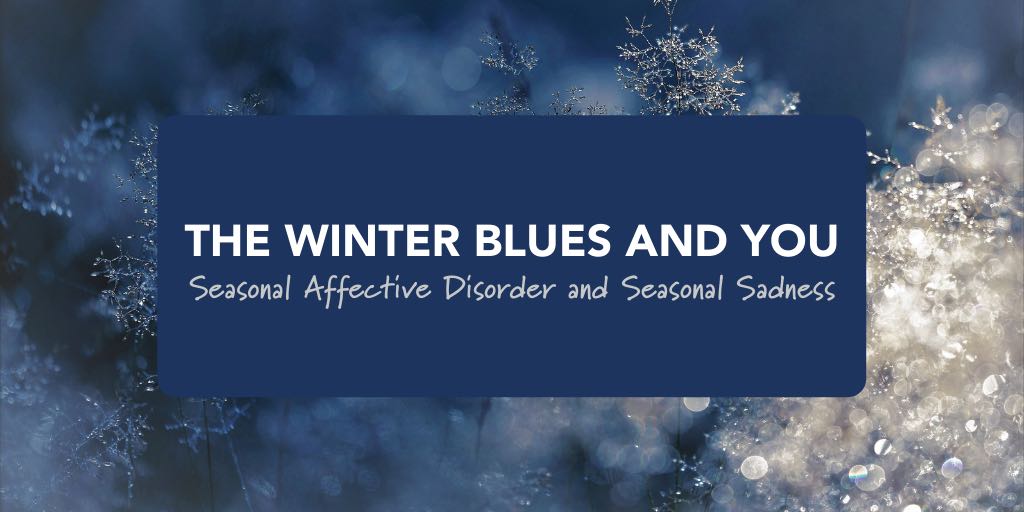The days are shorter, the cold is biting, and all the days seem to blend together. It’s winter.
It seems impossible not to get down during these bleaker months when we crave the sunshine on our backs, days off, and family time with daylight that lasts past 5:00 PM. If you or someone you know is really struggling with this time of year, they may want to see someone to discuss their symptoms and feelings. SAD, or Seasonal Affective Disorder, is a form of depression that is an extreme form of that “Winter Blues” feeling. But, it IS treatable, and there is help out there – both for general seasonal sadness and those with SAD.
In this blog, we’ll outline what exactly SAD is, and how it, and other forms of seasonal blues, can be treated and managed.
WHAT IS SAD?
SAD is a recurring type of depression that occurs in people further away from the equator during the colder months. Behavior changes and symptoms are similar to that of depression, or Major Depressive Disorder (MDD).
Symptoms of SAD:
- sadness
- low energy
- fatigue
- losing interest in activities you once enjoyed
- changes in appetite, weight, and sleeping patterns
- social withdrawal
SAD affects 5% of the population syndromally – which means the symptoms are bad enough to have a major impact on the day to day life of the person suffering from it. 15% of people are subsyndromal, which means they may not fit enough of the criteria for a full diagnosis, but are still impacted heavily by SAD. And 1 out of 5 people report struggling during the winter months. This lack of energy and “dragging” through the darker winter months subsides and exuberance returns once spring arrives.
WHAT CAUSES SAD:
This is up for debate in the scientific community. Some argue it is stress, genetics, and environmental factors that leaves a person predisposed. One idea is that those with SAD need a higher level of light in winter months to function properly due to abnormalities in their secretion of melatonin, which regulates our waking and sleeping cycle. Others believe that serotonin – a mood stabilizer – is somehow affected by this, but there is no real way to know yet.
HOW TO TREAT SAD:
Bright Light Therapy is sufficient for most patients. As little as 30 minutes a day of 10,000 lux (a measurement of light density) can be equal to a sunny day in June. It is suggested to do this every day. With continued Bright Light Therapy, nearly every patient sees their depression subside.
If you’re experiencing symptoms of SAD, and want to give Bright Light Therapy a try, be sure to only purchase quality light boxes. You can find an approved list of light boxes by Yale’s Winter Depression Research Clinic HERE.
However, it’s always best to consult with your primary physician about any treatment, including Bright Light Therapy, especially if you have retina issues or diabetes.
Some additional treatments that may help relieve symptoms of SAD are:
- Talk therapy
- Cognitive Behavioral Therapy
- Consistent exercise
- Staying social
- Taking advantage of any winter sunlight
Be sure to consult with your primary physician if you think that you may be suffering from Seasonal Affective Disorder.
Blog written and researched by Communications Associate, Lauren Maley
